Norma Taylor (born Evelyn Ruth Shepard) was an American dancer and showgirl.
Norma Taylor (born Evelyn Ruth Shepard) was an American dancer and showgirl.
Norma Taylor was born to Harrison Milton Shepard and his wife, Nina Olivia (Rosengren) Shepard in Omaha, NE. [1]
In 1925, Taylor joined the chorus of a traveling show. That same year, she won a beauty contest at a Chicago Park and was declared "the most beautiful blonde in Chicago." [2] Shortly afterward, Producer Charles Dillingham added Taylor to the Chicago run of the musical comedy Sonny. [3]
In 1926, Taylor joined the cast of Sonny as a dancer on Broadway. Soon after, Florenz Ziegfeld, Jr. cast Taylor as a dancer in the musical Rio Rita. Ziegfeld next engaged her for The Ziegfeld Follies of 1927.
Taylor enjoyed continuing success as a dancer in Broadway musicals with roles in She's My Baby (1928), Smiles (1930-1931), and The New Yorkers (1930-1931). Her last Broadway show was Here Goes the Bride (1931). [4]
Apart from her roles in staged musicals, Taylor also danced for entertainment in various nightclubs, including Texas Guinan's notorious speakeasies. She was a member of Guinan's traveling Whoopee Girls revue when French authorities banned the troupe from entering the country. Nevertheless, Taylor and another dancer slipped away to enjoy a forbidden night in Paris, a caper that received worldwide press attention. [5]
Taylor had roles in several Hollywood B movies. Her credits include: [6]
Taylor married Robert S. Taylor, a Piggly-Wiggly supermarket employee, while on the road in Memphis, TN. She was arrested for marrying at 16 but was released at her husband's insistence. [7] Little more is known about the marriage, but the couple appear to have separated in short order.
In October 1926, rumors spread on Broadway that Taylor was first engaged to, and then married, Tommy Guinan, brother of impresario and nightclub hostess Texas Guinan. The rumors persisted for years until the moment in 1931 when Tommy Guinan presented Taylor with "a $15,000 diamond bracelet" as an engagement gift, only to see her marry William Newton Duryea, a nightclub owner, three months later. The marriage lasted ten days before Taylor demanded a divorce, telling reporters, “Being married made it much harder for me to get a job. Everybody seemed to think I didn’t need help when I had a husband to fall back on. But, my husband couldn’t support me, so I lost out all around.” [8] [9]
Taylor quickly moved on to a "red hot love affair" with Millionaire playboy Tommy Manville, who would go on to set a Guinness world record of 13 marriages (Taylor was not one of his brides). In 1933, Mrs. Muriel Young Hutchins named Taylor in a divorce suit against her husband, drama coach John Hutchins. The drama played out for months in the national press, with Taylor labeled a "Love Thief" and "Love Pirate." [10]
In 1935, Taylor was again headline news for months regarding her alleged romance with surgeon Franklyn Thorpe, who was recently divorced from Mary Astor. In a custody battle over the child of Thorpe and Astor, details emerged of an alcohol-fueled "bathroom brawl" between Taylor and Dr. Thorpe. Police found the two sprawled on a bathroom floor after what Dr. Thorpe termed "a tussle." [11]
The legal battle also unearthed allegations that Taylor stabbed Dr. Thorpe twice with a turkey fork. Taylor denied everything, including the fork-stabbing incident. "Ha, Ha! That's a good one! I don't even eat turkey," she said. Appearing in court reportedly caused Taylor to "collapse" and forced her to check into a sanitarium. [12]
One theory about why Taylor was so distraught is that "every Hollywood contract had a morals clause stipulating that performers conduct themselves in a manner not in conflict with accepted public morality. In 1936, sleeping with a man sans a marriage license fell under that provision, meaning that [Taylor] might never work in films again." [13] In any event, soon after her court appearance, she found refuge at the home of former beau Tommy Manville, who was then married to his fourth wife, Marcelle Edwards, a showgirl with The Earl Carroll Vanities. [14]
Given her tumultuous past, Taylor led a surprisingly quiet life after leaving the entertainment world. In 1958, a newspaper reported she married Charles A. Adams, owner of a busy Tampa, FL gas station. She was described as "a pert little woman in a tan pedal-pusher uniform" who "bustles from car to car washing wind-shields, changing oil, [and] pouring gas." Taylor said she met Adams during World War II while working in a New York defense plant. They married in 1945 and moved to Tampa in 1949. She claimed to have used her many diamond rings and bracelets as collateral for a loan to buy the gas station. [15]
Taylor died in 1983.

Mary Louise Cecilia "Texas" Guinan was an American actress, producer and entrepreneur. Born in Texas to Irish immigrant parents, Guinan decided at an early age to become an entertainer. After becoming a star on the New York stage, the repercussions of her involvement in a weight loss scam motivated her to switch careers to the film business. Spending several years in California appearing in numerous productions, she eventually formed her own company.

Ethel Ruby Keeler was an American actress, dancer, and singer who was paired on-screen with Dick Powell in a string of successful early musicals at Warner Bros., particularly 42nd Street (1933). From 1928 to 1940, she was married to actor and singer Al Jolson. She retired from show business in the 1940s, but made a widely publicized comeback on Broadway in 1971.
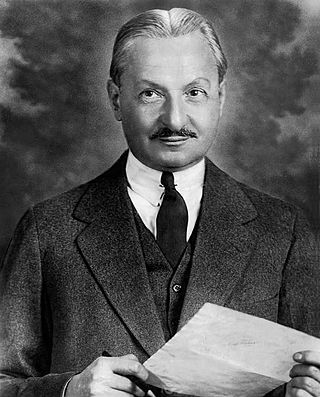
Florenz Edward Ziegfeld Jr. was an American Broadway impresario, notable for his series of theatrical revues, the Ziegfeld Follies (1907–1931), inspired by the Folies Bergère of Paris. He also produced the musical Show Boat. He was known as the "glorifier of the American girl". Ziegfeld is a member of the American Theater Hall of Fame.

Helen Morgan was an American singer and actress who worked in films and on the stage. A quintessential torch singer, she made a big splash in the Chicago club scene in the 1920s. She starred as Julie LaVerne in the original Broadway production of Hammerstein and Kern's musical Show Boat in 1927, as well as in the 1932 Broadway revival of the musical, and appeared in two film adaptations, a part-talkie made in 1929 and a full-sound version made in 1936, becoming firmly associated with the role. She suffered from bouts of alcoholism, and despite her notable success in the title role of another Hammerstein and Kern's Broadway musical, Sweet Adeline (1929), her stage career was relatively short. Helen Morgan died of cirrhosis of the liver at the age of 41. She was portrayed by Polly Bergen in the Playhouse 90 drama The Helen Morgan Story and by Ann Blyth in the 1957 biopic based on the television drama.

Marilyn Miller was one of the most popular Broadway musical stars of the 1920s and early 1930s. She was an accomplished tap dancer, singer and actress, and the combination of these talents endeared her to audiences. On stage, she usually played rags-to-riches Cinderella characters who lived happily ever after. Her enormous popularity and famed image were in distinct contrast to her personal life, which was marred by disappointment, tragedy, frequent illness, and ultimately her sudden death due to complications of nasal surgery at age 37.
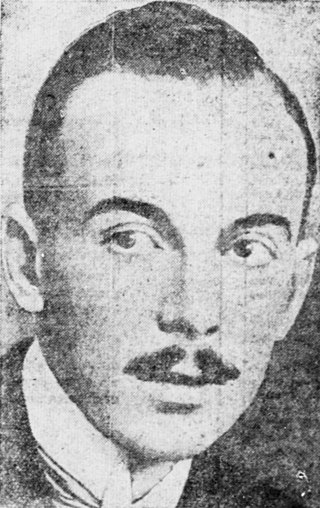
Thomas Franklyn Manville Jr. was an American socialite and heir to the Johns-Manville asbestos fortune. He was a celebrity in mid 20th-century Manhattan due to both his inherited wealth and his record-breaking 13 marriages to 11 women, which won him an entry in the Guinness Book of World Records. The termination of his marriages usually resulted in gossip, widespread publicity, and huge cash settlements.
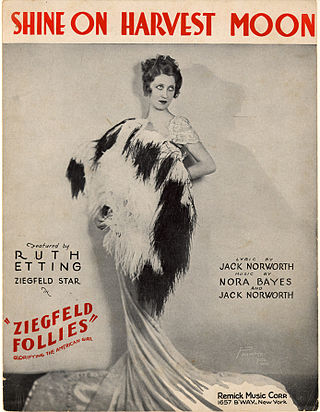
Ziegfeld Girls were the actresses, singers, chorus girls, showgirls and other female performers who appeared in Florenz Ziegfeld's theatrical Broadway revue spectaculars known as the Ziegfeld Follies, produced in New York City. The revues were originally based on the Folies Bergère of Paris. Ziegfeld girls also included female performers who participated in the Ziegfeld Midnight Frolic and the Ziegfeld 9 O'Clock Revue (1919-1920).

Robert Zigler Leonard was an American film director, actor, producer, and screenwriter.

Jacqueline Medura Logan was an American actress and silent film star. Logan was a WAMPAS Baby Star of 1922.
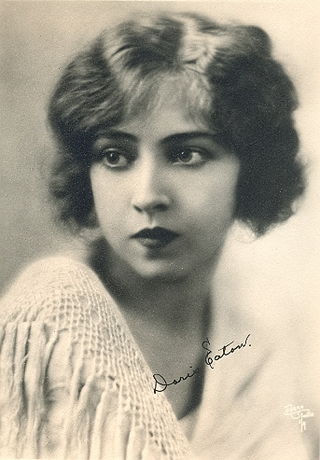
Doris Eaton Travis was an American dancer, stage and film actress, dance instructor, owner and manager, writer, and rancher, who was the last surviving Ziegfeld Girl, a troupe of acclaimed chorus girls who performed as members in the Broadway theatrical revues of the Ziegfeld Follies.

Anna Pennington was an American actress, dancer, and singer who starred on Broadway in the 1910s and 1920s, notably in the Ziegfeld Follies and George White's Scandals.
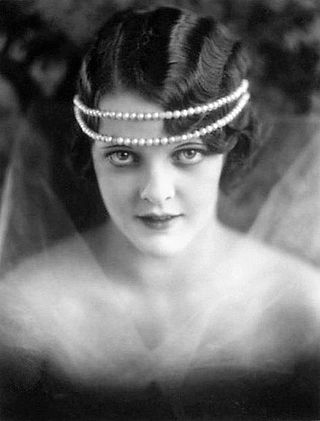
Blanche Mehaffey was an American showgirl and film actress.
Blanche Irene Sewell was an American film editor. She was known mainly for working at MGM Studios from 1925 until her death in 1949.

George White was an American theatrical and film producer and director who also was an actor, choreographer, composer, dancer, dramatist, lyricist and screenwriter, as well as a Broadway theater owner.

Noel Francis was an American actress of the stage and screen during the 1920s and 1930s. Born in Texas, she began her acting career on the Broadway stage in the mid-1920s, before moving to Hollywood at the beginning of the sound film era.

Dorothy Deborah Wegman Raphaelson was an American dancer, Ziegfeld Girl, vaudeville performer, and novelist.
Marion "Kiki" Roberts was an American dancer and showgirl. She was better known as the girlfriend and moll of American gangster Legs Diamond.

Barbara Newberry (1910–1986) was an American actress, dancer, singer, and choreographer.
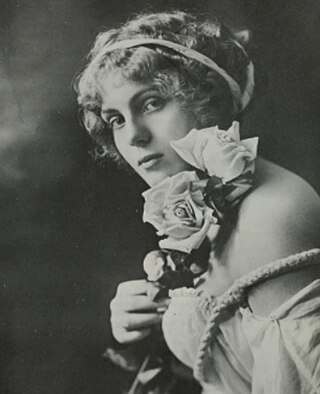
Vera K. Maxwell was an American actress, dancer, choreographer, and showgirl.

Gladys Feldman was an American actress, dancer, and showgirl.